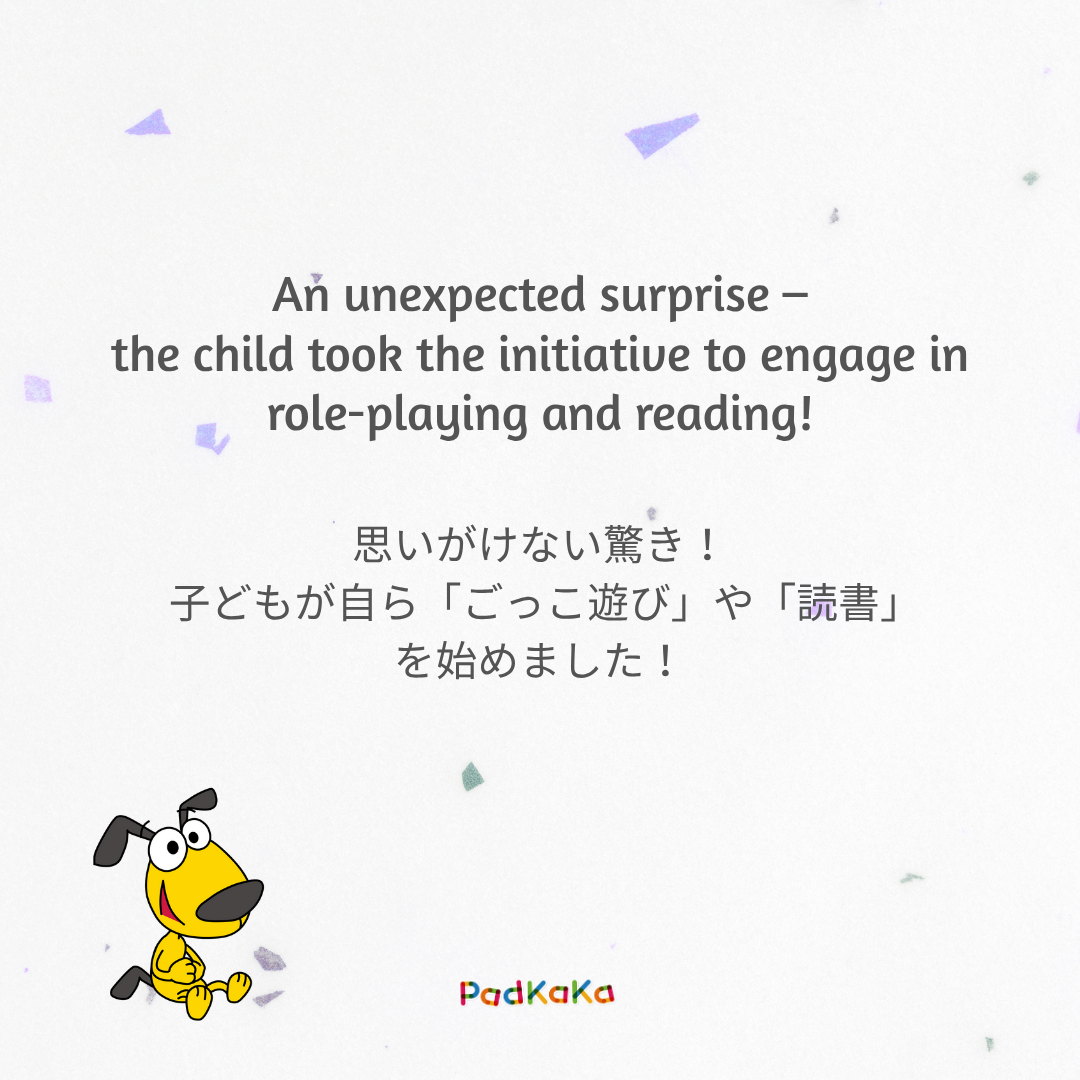An unexpected surprise – the child took the initiative to engage in role-playing and reading!

An Unexpected Surprise: My Child Took the Initiative to Role-Play and Read
By Belle Chang

Hello everyone, I’m Belle, a mom to a curious young girl.
My daughter started using PadKaKa when she was just over four years old. At that time, the PadKaKa reading books hadn’t come out yet, so I only purchased the vocabulary animation cards.
She absolutely loved playing with the cards and looked forward to discovering new ones every day. I’ve previously shared updates on her learning journey.
This time, I’d like to talk about our experience with the PadKaKa reading books.
Hesitation: Will PadKaKa Reading Books Actually Be Useful?
After using PadKaKa for over a year, we had already gone through most of the cartoons. I arranged two weekly American English classes and additional enrichment lessons for my daughter.
She would complete her homework after class, but showed no interest in reviewing English afterward. Since she had already learned so many words and phrases through PadKaKa, the lessons felt too easy and repetitive to her.
Later, I found out that the new PadKaKa reading books had been launched.
But I hesitated—I thought: she doesn’t even review the books, CDs, and reading pens from her English classes.
If I buy the PadKaKa reading books, will they end up like the previous English picture books… gathering dust?
So…
Even though the PadKaKa reading books had been sitting on my wish list for a while, I still wasn’t ready to buy.

Later on, I consulted Teacher Liao to talk about my daughter’s learning progress.
The teacher suggested that she could start using the PadKaKa talking books to begin developing “natural word recognition” and early reading skills.
I thought to myself: if she’s not interested at the moment, then maybe I can start learning first.
So I bought the talking book set and told my daughter about it.
To my surprise, she was absolutely thrilled and eager—she came with me to pick it up and help unpack it.
Every character on the covers was someone she recognized, and she happily called out their names.
She suddenly took the initiative to role-play and read!
Without hesitation, she opened the first book, found words she liked, and started reading them aloud.
Then, she rushed off to find her PadKaKa vocabulary cards, watched several matching animation clips again on her own, and read through the cards once more—all before I had even downloaded the audio files for the talking pen.

Day 1: She read half of the first talking book.
Day 2: After we loaded the audio files onto the talking pen, she picked it up on her own, grabbed the book, and started reading along.
We also reorganized the vocabulary cards in numerical order inside a photo album to help her locate the words more easily. (Previously, we sorted the cards by category.)
In the evening, she said she wanted to play using the character tokens.
I recorded a short video to share with others—because I was genuinely surprised that she initiated the role-playing herself!
The content was engaging, and I could even hear her giggling sometimes.
Each character had a distinct voice, which made everything more lively and fun.
(Her English classes also include pronunciation practice, but all the character voices are read by the same person.)
Honestly, I didn’t expect her to be interested in the talking books.
But they ended up reactivating her practice—and got her playing with the character tokens again.
That was a major win!

I believe there are two key reasons why my daughter enjoys PadKaKa’s talking books:
- She already loves the PadKaKa vocabulary cartoons and has built a deep emotional connection with them.
- She’s familiar with most of the cartoon dialogues and understands the majority of words and sentences. As language experts and Teacher Liao have said, when it comes to learning to recognize words, children should start with books they can already understand 80–90% of.
PadKaKa Talking Books Are Designed Differently
At first, I thought the PadKaKa talking books would be just like any other picture book with audio.
But after my daughter started using them, I realized they’re designed in a completely different way:
PadKaKa Feature 1: Talking books work alongside PadKaKa vocabulary cartoons
Unlike regular picture books, which are usually just text with audio, PadKaKa’s design encourages children to first become familiar with the cartoon and then use the talking book. This approach is extremely effective for early English learning—kids enjoy role-playing and naturally develop word recognition and reading ability.
What sets PadKaKa’s talking books apart is the emotional engagement:
Because children love the cartoons, and the character voices express a wide range of emotions, the experience is far more dynamic and memorable—unlike typical picture books that are often narrated by just one person.
PadKaKa Feature 2: Built-in Parent–Child English Practice
This feature complements the cartoon learning by helping parents use practical English at home.
For example, after a child learns the “Help” card, they can find matching parent–child phrases in the PadKaKa talking book such as:
- Could you help me?
- I need your help.
Using these phrases in real-life situations strengthens a child’s language acquisition—especially speaking and listening skills.
This parent–child feature is one of PadKaKa’s unique strengths.
If you’re considering buying PadKaKa, I highly recommend getting the full set—that includes both the vocabulary cartoons and the talking books. This combination is much more effective.
Teacher Liao once said that maintaining enthusiasm often depends on two things:
- Interest
- A sense of accomplishment
Clearly, my daughter has both right now! Keep going!
孩子自然閱讀|PadKaKa父母使用心得推薦





